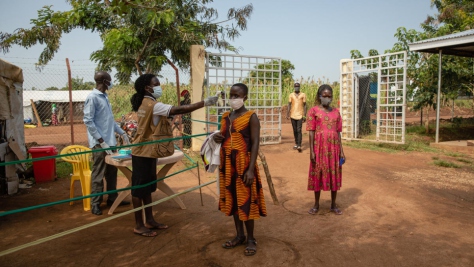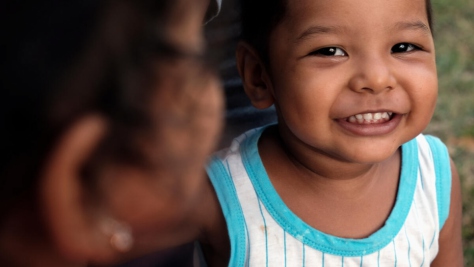Ethiopia: Somali refugees to be relocated away from border
This is a summary of what was said by UNHCR spokesperson Jennifer Pagonis – to whom quoted text may be attributed – at today's press briefing at the Palais des Nations in Geneva.
In Ethiopia today (Friday), UNHCR teams are expected to start relocating a group of 500 newly-recognized Somali refugees who fled from renewed conflict in strife-torn south and central Somalia over the last year. They have been staying around the Kebribeyah area, near the Somali border in eastern Ethiopia and are being relocated to a re-opened UNHCR camp at Teferi Ber.
The refugees are part of a group of 4,000 Somali refugees who have recently been granted refugee status by UNHCR and the government's Authority for Refugees and Returnees Affairs (ARRA). An estimated 7,000 additional Somalis who also claim to have fled fighting and insecurity in Somalia, are waiting to be screened at other sites in eastern Ethiopia.
The new camp site at Teferi Ber, some 120 km north of Kebribeyah, was formerly a UNHCR camp which in the 1990s hosted some 49,000 mainly Somalis refugees who had fled fighting in their country. The camp was officially closed in 2001 after all the refugees returned, mainly to the self -declared republic of Somaliland.
After arriving at Teferi Ber, the refugees will spend three days in a reception centre where they will be allocated plots of land to construct homes and given building materials. They will also be given food as well as tarpaulins, blankets, sleeping mats, kitchen sets, jerry cans, kerosene stoves, and soap. The ARRA has established a temporary health centre until permanent structures can be built.
The Somali Region of Ethiopia already hosts more than 16,500 refugees. With the new arrivals, the total is 20,300. At the peak of the Somali refugee crisis in the early 90s, the region hosted 628,000 refugees in eight camps. The overwhelming majority went home between 1997 and 2005, and all of the camps were closed except a camp at Kebribeyah.
Related news and stories
Thousands of newly arrived Somali refugees in Ethiopia relocated to new settlement
Samira's Story
Drought brings life-threatening food shortages for refugees in Ethiopia
100,000 new Somali refugees arrive in Ethiopia in the past month, UN and partners are calling for urgent funding
UNHCR teams and partners rush assistance to some 100,000 newly arrived Somali refugees in hard-to-reach area of Ethiopia
As the Horn of Africa drought enters a sixth failed rainy season, UNHCR calls for urgent assistance
-

Forced displacement hit new high in 2020 despite fewer routes to safety
18 Jun 2021 The number of people forced to flee their homes reached a new peak last year, as COVID-19 failed to prevent conflict but made it to harder to find refuge. -

Behind each number is a person forced from their home.
18 Jun 2021 -

Dance is helping Venezuelan youth settle into new life in Panama
18 Jun 2021 -

Global Trends in Forced Displacement - 2020
18 Jun 2021 To read the latest Global Trends report (published on 17 June 2022), copy and paste the following link into your browser address bar: www.unhcr.org/globaltrends -

Refugees and locals in Mauritania exchange strategies for adapting to climate change
17 Jun 2021 Malian refugees living in Mauritania are applying and sharing techniques from back home to grow food and protect the environment. -

COVID-19 poses a major threat to the life and welfare of refugees in Uganda
17 Jun 2021 -
Statement at the International Donors' Conference in Solidarity with Venezuelan Refugees and Migrants
17 Jun 2021 -

UNHCR and IOM celebrate the commitment of the international community to mobilize funds for refugees and migrants from Venezuela
17 Jun 2021 Joint UNHCR/IOM press release -

Helena Christensen meets a Ukrainian superhero
17 Jun 2021
